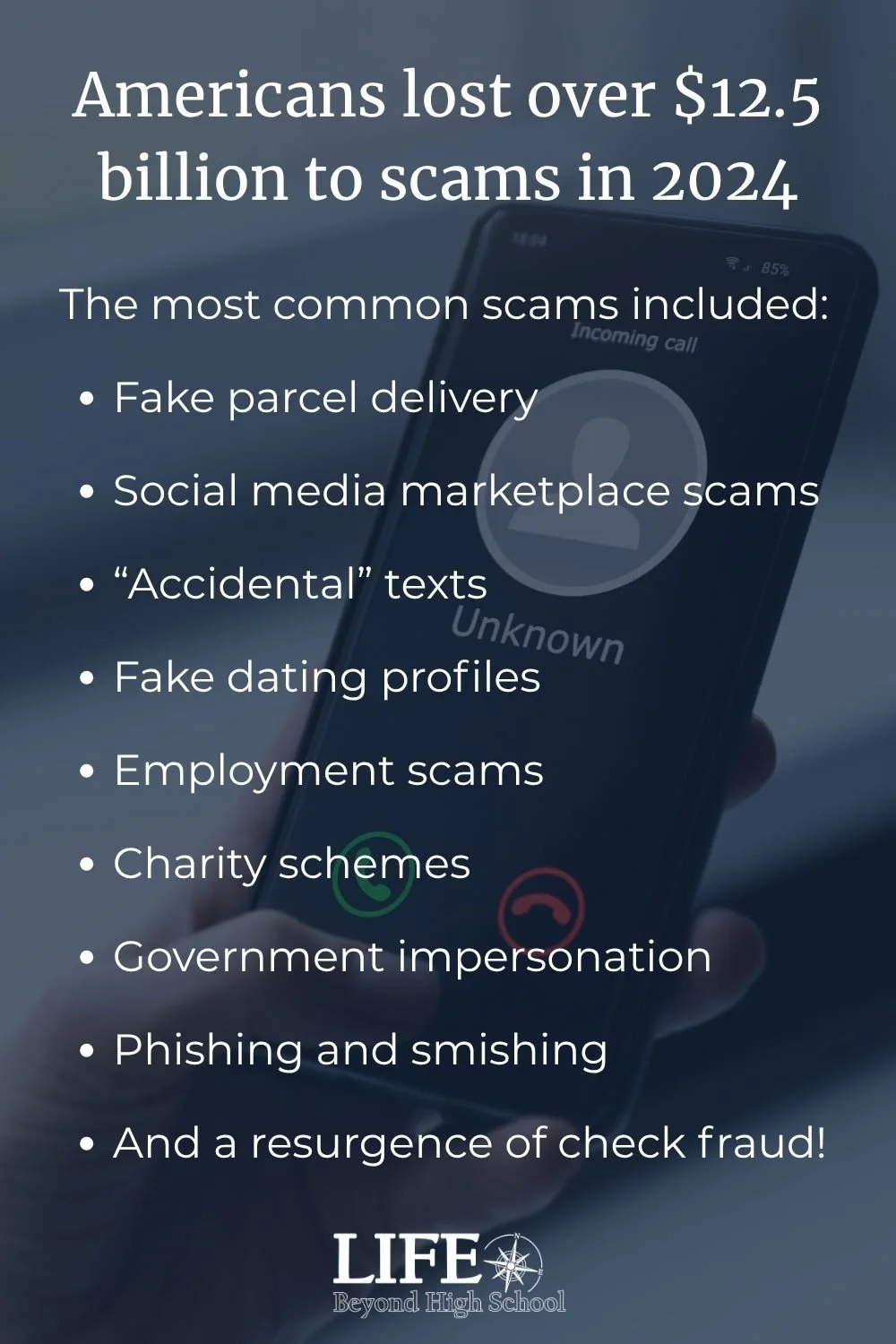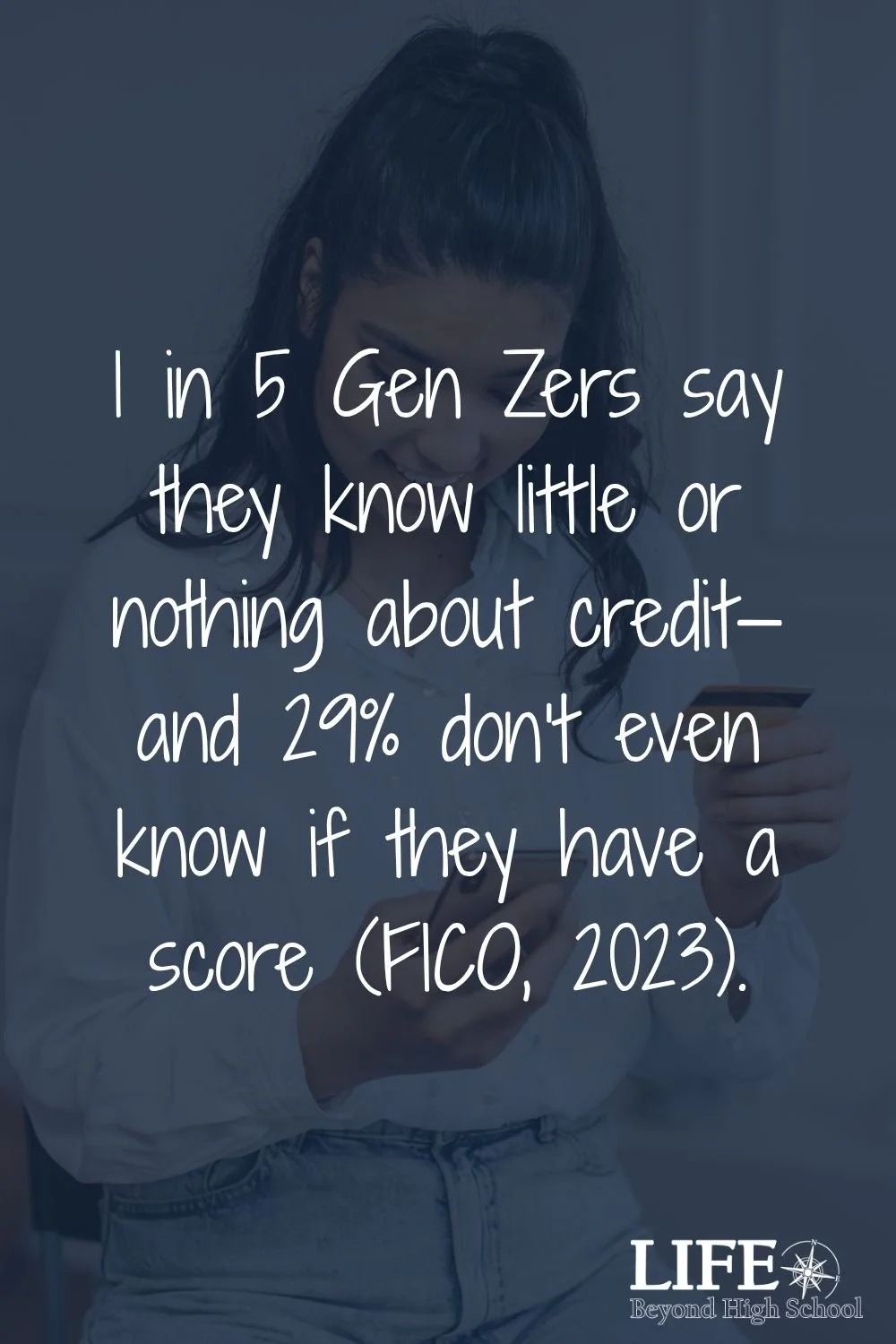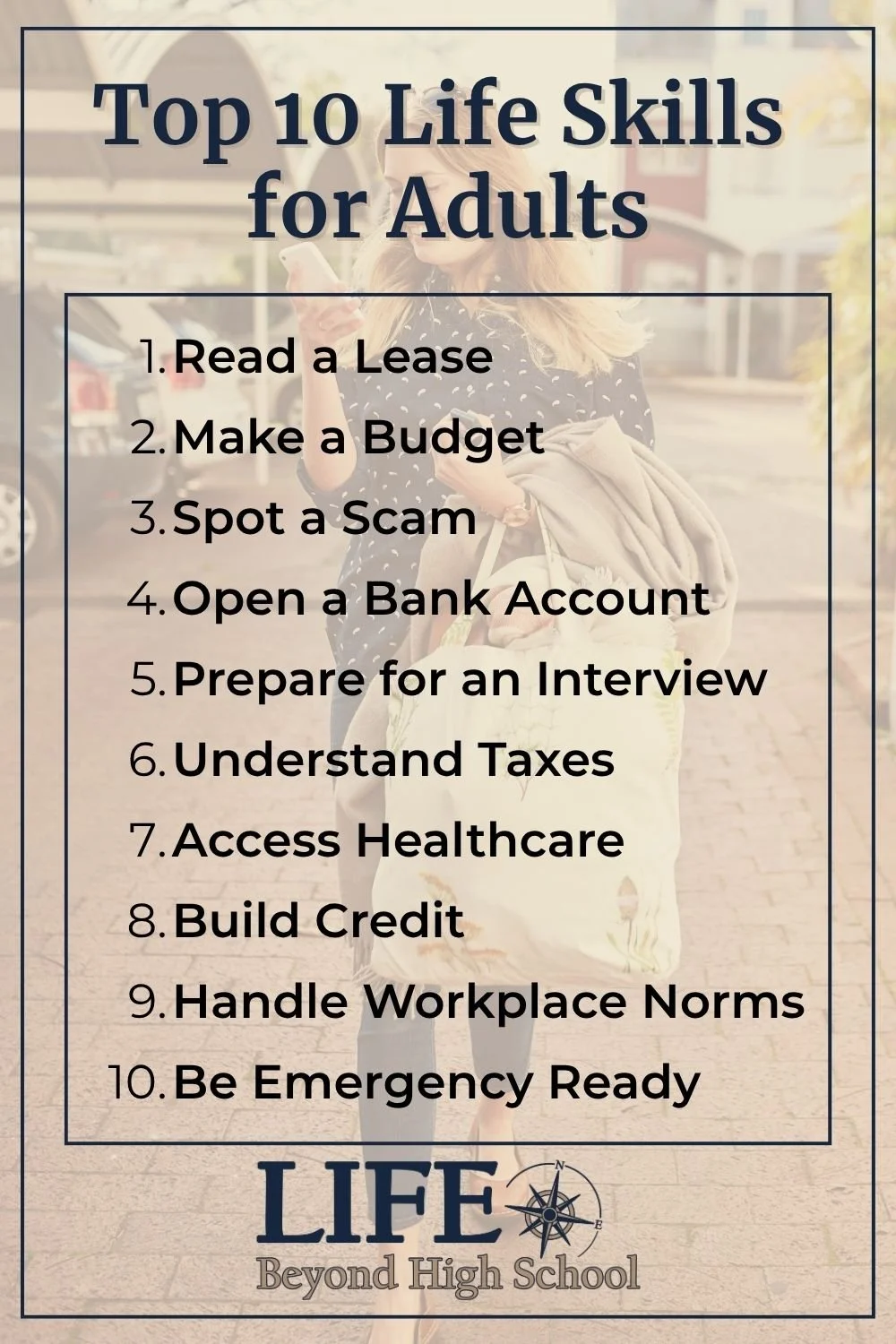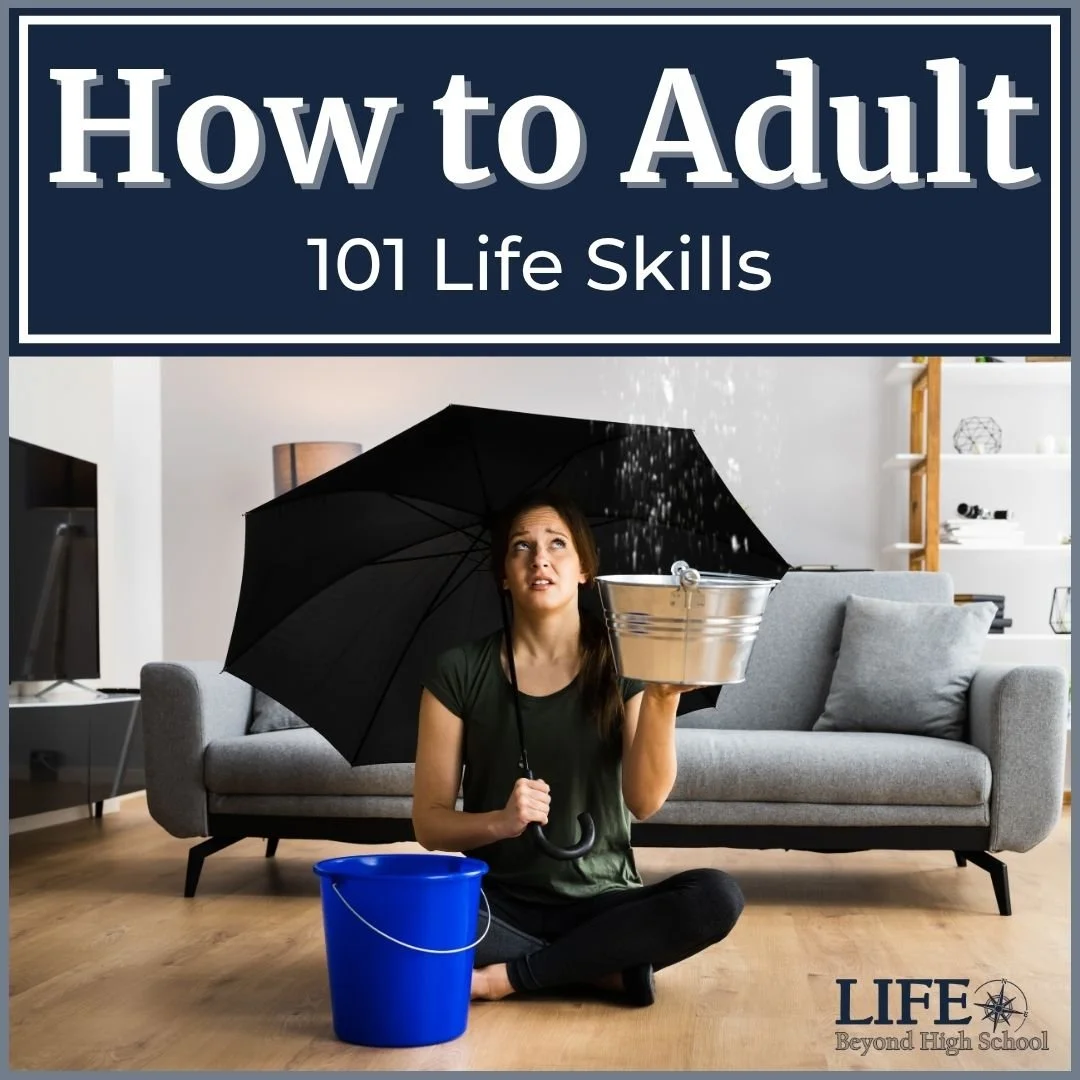Practical Guide to Teaching Life Skills in Adult Ed – Part 3
✨ This is Part 3 of a 3-part series on teaching life skills in adult education.
← Part 1: Why Teaching Life Skills Matters | ← Part 2: How to Teach Life Skills in GED & ESL
A List of Life Skills Every Adult Should Know
You don’t have to teach every life skill under the sun (heck, you don’t have to teach life skills at all). But giving students a few tools they can use right away? That’s powerful.
Most adult learners aren’t pursuing a diploma just for the heck of it. They’re preparing for college, career, or just to live life on their own terms, and it’s the practical stuff that makes all the difference.
There are hundreds of life skills we rely on in daily adulting, but here are 10 of the most essential, along with classroom-ready ways to teach them.
1. How to Read, Understand, and Sign a Lease
Leases are full of legal terms that can trip up first-time renters. Surveys show only 24% to 70% of renters actually read the agreement before signing. While that’s a wide range, I think we can agree: many students are skipping the fine print.
Use the free Reading and Signing a Lease activity to help students identify due dates, deposits, and maintenance responsibilities, skills they'll need sooner than they think.
2. How to Create a Realistic Budget
A recent poll found that Gen Zers carry the highest average personal debt of any generation: $94,101. Young adults are battling inflation and high costs of living, and budgeting is more important than ever. Plus, with credit cards and Venmo, money is easier than ever to spend, and students don’t necessarily feel the pain the way they would if they were using cash. One student told me they’d never tracked a single expense, and were shocked at how much they spent on Uber Eats without even realizing it.
Start with a basic budget template. For deeper dives, my Financial Independence Lesson explores envelope and zero-based budgeting. Or try the Budgeting Puzzle Set for quick vocab review.
3. How to Avoid Common Scams
Americans lost over $12.5 billion to scams in 2024 (FTC). Investment and employment scams topped the list, and scammers use every tool: calls, emails, social media, and more.
Check out the Scam Awareness Puzzle Set to introduce the topic, or use my Job Searching Lesson to help students spot red flags in job postings. The Social Security Administration also shares excellent free resources during Slam the Scam Day each March.
4. How to Open and Use a Bank Account
About 6% of adults were unbanked in 2024. This disproportionately impacts low-income, young, and disabled adults. Many students don’t understand banking basics until they’re hit with overdraft fees. My Bank Account Lesson covers account types, how to access your money, and how to protect your information.
5. How to Prepare for a Job Interview
Applying for jobs on your phone is easy. But then preparing for an interview? Not so much.
After the pandemic, I’ve noticed many students struggle with communication and interpersonal skills. I like to start with a list of the most common interview questions, have students write their answers, and then practice them out loud in pairs. Admittedly, students groan at first, but by the third rotation, they’ve usually loosened up and start building confidence!
To reinforce interview vocab and soft skills, try the Soft Skills for Employment Puzzle Set.
6. The Basics of Taxes
Nothing is certain except death and taxes, right?
Introduce everyday taxes (like sales tax or paycheck deductions), then move into income tax forms. I recommend giving students a blank W-4 form and encouraging them to explore it before they’re asked to fill one out on the spot.
The Taxes Terminology puzzle set covers common terms, while the Starting a New Job lesson includes a sample W-2.
7. How to Access Healthcare
Deductibles, co-pays, and premiums can feel like a foreign language. And because access varies (students may qualify for Medicaid, tribal care, ACA, employer-sponsored plans, etc.), it’s tricky to teach.
At the very least, make sure students are aware of the health insurance marketplace and that they are fluent in the language of insurance.
8. How to Build and Manage Credit
According to FICO, 1 in 5 Gen Zers say they know little or nothing about credit, and 29% don’t even know if they have a score.
I use my Credit Card Lesson to teach how credit works and what affects your score. It includes both the Credit Score Puzzle Set and Credit Card Puzzle Set, plus a workbook for tracking credit-building steps.
9. How to Navigate Workplace Norms
This generation of young adults missed key years of social development during COVID. I use warm-ups where we tackle social situations. You can DIY it with questions like:
“Stephen’s alarm didn’t go off. He’s going to be late for work. What should he do?”
Or:
“Elizabeth’s DoorDash order is wrong. What’s a reasonable response?”
These conversations are the heart of the final segment in my Starting a New Job Lesson, where we analyze workplace faux pas and brainstorm better solutions.
Side note: Personally, I don’t ask students to act out scenarios. We just talk through them.
10. How to Prepare for Emergencies
Natural disasters are no longer rare. Every adult should have an evacuation plan, a reunification plan, and emergency supplies at home and in their car.
Homeland Security has a helpful site that walks students through important questions and has resources to develop emergency plans. The Emergency Preparedness Puzzle Set helps reinforce essential terms like evacuation, first aid, and home kits.
10 critical life skills for successful adulting.
Want an Easy Way to Keep the Learning Going?
If you're thinking, "These are great, but how do I fit it all in?" This is where my favorite resource was born.
One morning, I got a flat tire on the way to school. After arriving late (thanks to a heroic roadside tire change), I launched into a dramatic retelling during our daily “good things” check-in. And that’s when I realized, not a single student in my class knew how to change a tire.
That one conversation turned into a spontaneous mini-lesson… which turned into a weekly tradition… which turned into a full-blown resource:
👉 How to Adult: 101 Bite-Sized Life Skills
This resource includes 101 quick slides, each focused on one life skill for adults, with built-in video links, discussion questions, and zero prep required. Students pick the topic. You project the slide. Boom! You’re teaching life skills.
We’ve had ironing competitions, debates about expired milk, and surprisingly passionate conversations about carrying cash. And the best part? Students look forward to it. They ask for it. They remember it.
Keep It Going
Looking for more classroom-ready tools to teach life skills without the stress? Whether you're teaching in high school, transition, or adult education, these tools make teaching life skills feel less overwhelming.
Or go back to the rest of the series:






